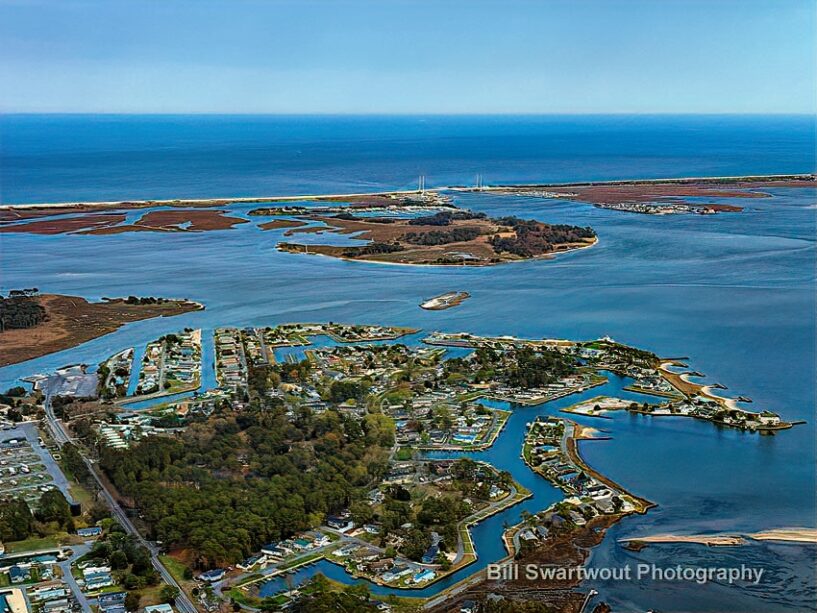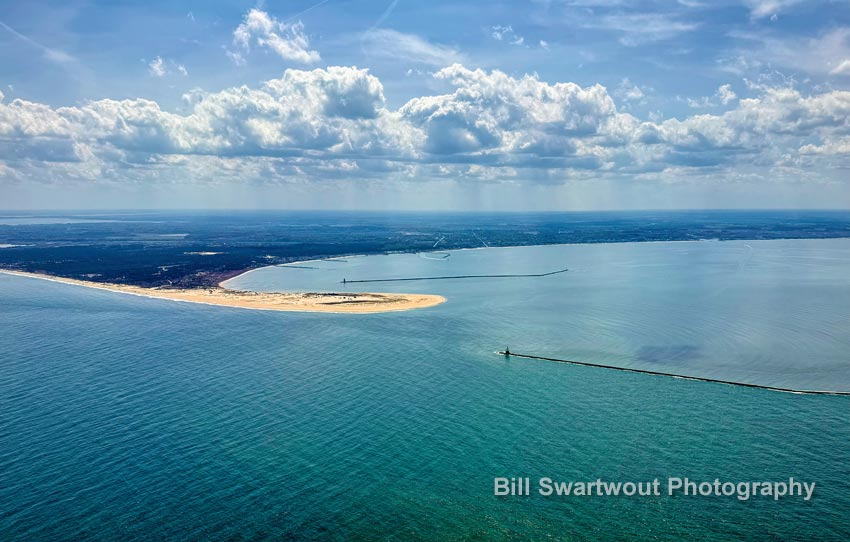Massey’s Landing and the Delaware Seashore State Park appear in this aerial photograph.
The Indian River inlet is the crucial spot where the river gets to mingle with the Atlantic Ocean. It’s like a giant water party, complete with the famous Indian River Inlet Bridge acting as the bouncer. And let’s not forget the Delaware Seashore State Park, where nature struts its stuff like it’s on a runway.
More seriously, in the foreground of this photograph from above, the vibrant coastal community of Massey’s Landing springs to life, nestled snugly between shimmering waterways and lush landscapes. The area is a colorful tapestry of nature and human habitation, with boats bobbing gently in the marinas and houses dotting the shoreline and canals. It’s a place where the salty breeze carries laughter and the promise of a good day.
Standing proudly against the horizon is the Indian River Inlet Bridge, an impressive feat of modern engineering. This iconic structure gracefully stretches across the expanse, its cable stays reflecting in the clear waters below. It’s not just a bridge; it’s a symbol of connection and possibility.
The bridge seamlessly links Route 1 across the Indian River Inlet, serving as a vital artery for locals and visitors alike. Whether you’re a local heading out for your daily commute or a tourist eager for new adventures, this bridge is your gateway. It invites everyone to explore the hidden gems and sandy shores that lie beyond.
As you cross, you’re greeted with panoramic views that are nothing short of breathtaking. The sparkling waters glisten under the sun, creating a scene straight out of a postcard. It’s hard not to smile as you realize you’re embarking on another exciting journey in this coastal paradise.
To the right of the inlet, you’ll find the South Shore Marina community, where everyone knows each other’s business—especially when it comes to whose boat is bigger. Farther down Coastal Highway, you’ll stumble upon Indian Harbor Villa and Tower Shore, where residents probably argue about who has the better view. All under a clear blue sky that seems to say, “We love being here.”
Of course, the photograph is available. CLICK HERE to see more and/or make a purchase.



